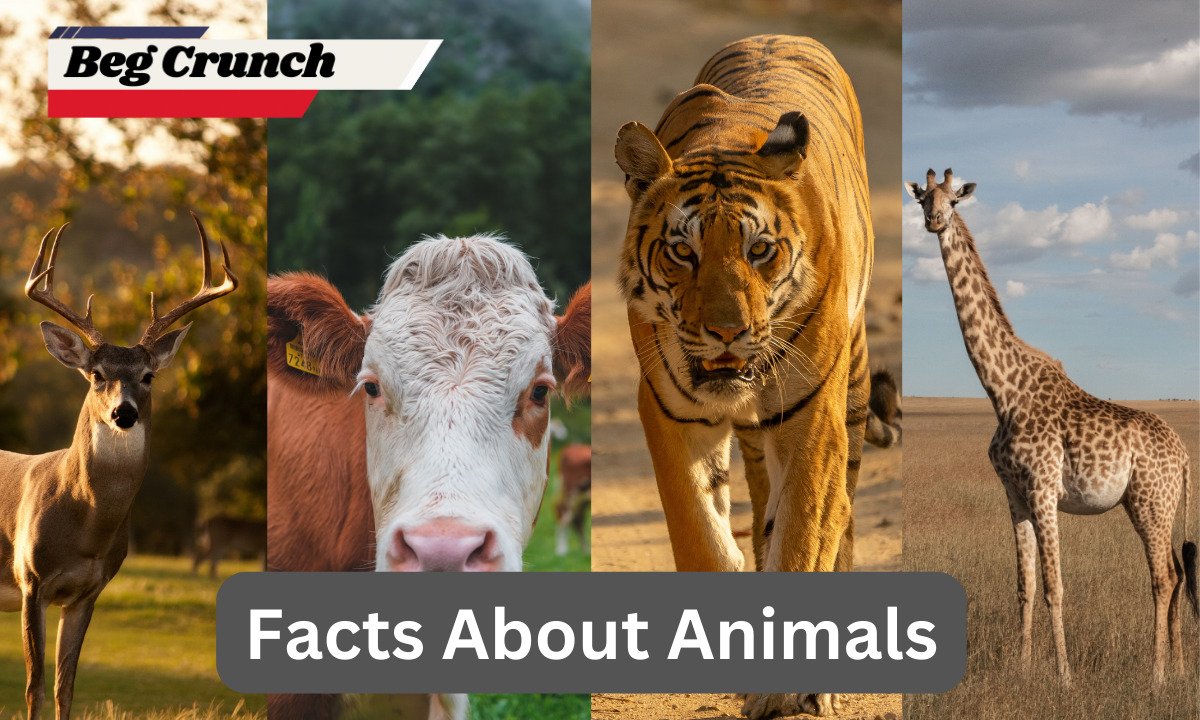Discovering Fascinating Facts About Animals
The animal kingdom is a realm of incredible diversity, adaptation, and wonder. From the depths of the oceans to the heights of the mountains, animals inhabit every corner of our planet, showcasing a wide range of behaviors, habitats, and characteristics. In this article, we’ll embark on a journey through the animal world and explore captivating facts that shed light on their extraordinary lives.
Biodiversity: A Tapestry of Life
Countless Species: A Tapestry of Life Unveiled
The exploration of Earth’s astounding biodiversity has long captivated the scientific community. The canvas of life on our planet is intricately woven with an estimated spectrum of animal species ranging from 8.7 million to 30 million. This wide variation stems from the ongoing discovery of previously unknown organisms, underscoring the sheer vastness of life forms that remain to be unveiled.
Delving into the heart of biodiversity, scientists continually refine their understanding of the various ecosystems that support this multitude of species. From tropical rainforests to the depths of the ocean abyss, each habitat plays host to its unique assortment of creatures. It is within these ecosystems that countless species engage in a delicate dance of survival, adaptation, and evolution.
Insect Abundance: The Microcosm of Earth’s Dominance
In the intricate tapestry of life, insects stand as a testament to both the incredible adaptability of life and the magnitude of Earth’s biological diversity. With their omnipresence, insects reign supreme within the animal kingdom, making up over half of all known living organisms. These six-legged wonders thrive in every corner of our planet, from scorching deserts to frozen tundras.
Insects’ dominance isn’t just limited to numbers; their ecological importance is profound. Pollinators like bees and butterflies play a vital role in the reproduction of countless plant species, underpinning the very foundation of terrestrial ecosystems.
Decomposers such as beetles and ants facilitate the recycling of organic matter, sustaining the nutrient cycles that support plant growth. The interdependence between insects and the broader ecosystem is a mesmerizing illustration of nature’s intricate balance.
Marine Marvels: Unveiling the Ocean’s Grandeur
Beyond the terrestrial realm lies the boundless expanse of the oceans, a realm teeming with wonders that continue to captivate the human imagination. Within this aqueous realm, a tapestry of marine life unfolds, showcasing the extraordinary adaptations that have enabled creatures to thrive in the depths.
Among these marine marvels, the blue whale stands as a testament to the magnificence of evolution. As the largest animal to have ever graced the Earth, it attains lengths of up to 100 feet (30 meters) and weighs as much as 200 tons.
This leviathan of the deep represents the pinnacle of an intricate food web, where krill, small shrimp-like organisms, constitute its primary source of sustenance. The intricate interplay of predator and prey, combined with the ocean’s nurturing embrace, has fostered the evolution of these awe-inspiring giants.
Remarkable Adaptations and Survival Strategies
Camouflage ExpertsMany animals have evolved remarkable camouflage techniques to blend seamlessly into their surroundings. Examples include the leaf-tailed gecko, which resembles a leaf, and the walking stick insect, which mimics a twig.
- Echolocation Mastery
Bats use echolocation to navigate and hunt. They emit high-frequency sound waves and listen to the echoes that bounce back, allowing them to create a mental map of their surroundings.
- Antarctic Antics
The Weddell seal, native to Antarctica, has adaptations that enable it to thrive in frigid waters. Its blood contains a high concentration of oxygen-carrying proteins, allowing it to stay submerged for long periods.
Animal Intelligence and Social Dynamics
- Tool Use
While once thought to be exclusive to humans, tool use is observed in various animal species. For instance, dolphins use sponges to shield their snouts when feeding, while certain birds utilize sticks to scrape insects from tree bark.
- Complex Communication
Animal communication takes on various forms, from the intricate dances of bees to the elaborate songs of birds. Some species, like dolphins and whales, have complex vocalizations that likely serve social and navigational purposes.
- Social Creatures
Many animals are highly social and form intricate social structures. Examples include ants, which live in colonies with specialized roles, and elephants, known for their close-knit family units.
Unusual Traits and Behaviors
- Hibernation and Torpor
Some animals enter hibernation or torpor—a state of decreased activity and metabolic rate—during periods of harsh conditions. Bears hibernate through the winter, conserving energy until food becomes more abundant.
- Parthenogenesis
In certain species, like some reptiles and insects, females can reproduce without mating through a process called parthenogenesis. This allows them to produce offspring genetically identical to themselves.
FAQs
Q1. Which mammal is the tiniest in the world?
A1. The bumblebee bat, also known as Kitti’s hog-nosed bat, holds the title of the world’s smallest mammal. It weighs about as much as a penny and has a wingspan of around 5.5 inches (14 cm).
Q2. Can animals show altruistic behavior?
A2. Yes, many animals exhibit altruistic behavior, where they act selflessly to help others. Examples include dolphins protecting weaker members of their pod and vampire bats regurgitating food for hungry companions.
Q3. Which animal is known for its mimicry abilities?
A3. The mimic octopus is renowned for its remarkable mimicry skills. It can imitate the appearance and movements of various marine creatures, such as lionfish, flatfish, and jellyfish.
Q4. What is the lifespan of a mayfly?
A4. Mayflies have one of the shortest lifespans in the animal kingdom. Depending on the species, their adult phase can last from just a few hours to a few days.
Q5. How do migratory birds navigate during long journeys?
A5. Migratory birds use a combination of visual landmarks, magnetic cues, and the position of the sun and stars to navigate during their long journeys across continents.
Conclusion
The animal kingdom is a realm of endless fascination, with each species contributing to the intricate web of life on Earth. From their astonishing adaptations to their complex social behaviors, animals continue to inspire and astonish us. As we delve deeper into the study of animals, we uncover new insights into the natural world and gain a greater appreciation for the remarkable diversity that surrounds us.







